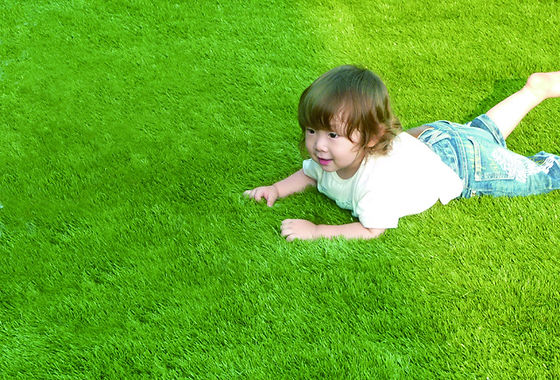Which Synthetic Lawn Fiber Lasts Longest? Polyethylene vs Polypropylen…

본문
Your artificial grass’s ability to withstand foot traffic, weather, and time depends heavily on the synthetic fiber used — making this decision one of the most important in your installation.
Most artificial lawns are constructed using one or more of these three materials: polyethylene, polypropylene, or nylon, with varying degrees of suitability depending on application.
Polyethylene’s appeal lies in its comfort and aesthetic quality, making it the go-to choice for families prioritizing beauty and touch.
It also offers strong resistance to ultraviolet radiation, helping to minimize color fading and degradation over extended sun exposure.
In settings where appearance and comfort outweigh extreme durability — like suburban yards — polyethylene is the preferred standard.
Although suitable for light to moderate use, polyethylene fibers tend to lose their upright posture under persistent pressure or abrasive conditions.
Due to its hardness and less natural feel, polypropylene is rarely used alone in premium installations but is common in economy-grade turf.
Many mid-range artificial grass products combine polypropylene with polyethylene to reduce manufacturing costs while maintaining a decent appearance.
However, polypropylene breaks down more rapidly under prolonged UV exposure and is not recommended for sunny climates unless specially treated.
Nylon’s exceptional durability has made it the standard in professional sports turf and commercial applications demanding maximum endurance.
Nylon’s ability to spring back into place makes it uniquely suited to areas where repeated pressure is unavoidable.
However, nylon comes at a higher price point and tends to feel firmer underfoot compared to the plushness of polyethylene.
For regions with intense heat, nylon’s thermal properties may require additional considerations like infill or shading solutions.
If longevity under stress is your priority, nylon > polyethylene > polypropylene is the standard performance ranking.
A high-quality installation with dense tufting and robust backing can extend the life of even mid-range fibers significantly.
These construction details often matter more than the fiber alone — investing in tight, dense tufting maximizes durability across all material types.
A premium backing with integrated UV inhibitors and efficient drainage systems dramatically extends the turf’s functional life.
Your selection should reflect how the space will be used, who will use it, and what level of maintenance you’re willing to accept.
If you want a lawn that feels natural and endures daily play without breaking the bank, 熊本 人工芝 業者 polyethylene is the smartest compromise.
Despite its cost, nylon’s resilience, shape retention, and resistance to wear make it indispensable in professional and commercial applications.
Polypropylene can be a viable option for budget-driven projects or supplementary layers in blended systems — but avoid using it as the primary fiber in regularly used areas.
Reputable brands stand behind their products with strong warranties and transparent material disclosures — prioritize these over cheap imitations.
Making an informed fiber choice means enjoying a lawn that looks new, performs reliably, and withstands years of weather and use without disappointing you.




댓글목록0
댓글 포인트 안내